Situated 60km north of Paris, Beauvais Cathedral symbolises the height of architectural endeavour in the gothic architecture of the Middle Ages. Ambitious and gravity-defying, the cathedral of Saint-Pierre in Beauvais boasts the record for the highest ceiling in a gothic choir.
In fact, it was the tallest monument in Christendom for four consecutive years until its lantern tower tragically collapsed… A must-see monument if you’re fond of Gothic edifices!
Beauvais Cathedral: an ambitious project
The cathedral also shows the ambition of the builders who were unable to complete it.
Starting construction in 1225, the cathedral was meant to be the greatest church in the kingdom. However, over the centuries construction experienced many problems and structural collapses.
What exists today – the choir and the transept – is impressive enough for us to dare to imagine what the finished project would have been.
Despite its size, it is not currently a UNESCO World Heritage site, unlike neighbouring Amiens Cathedral.
A brief historic overview of Beauvais Cathedral
It all started in the 13th century.
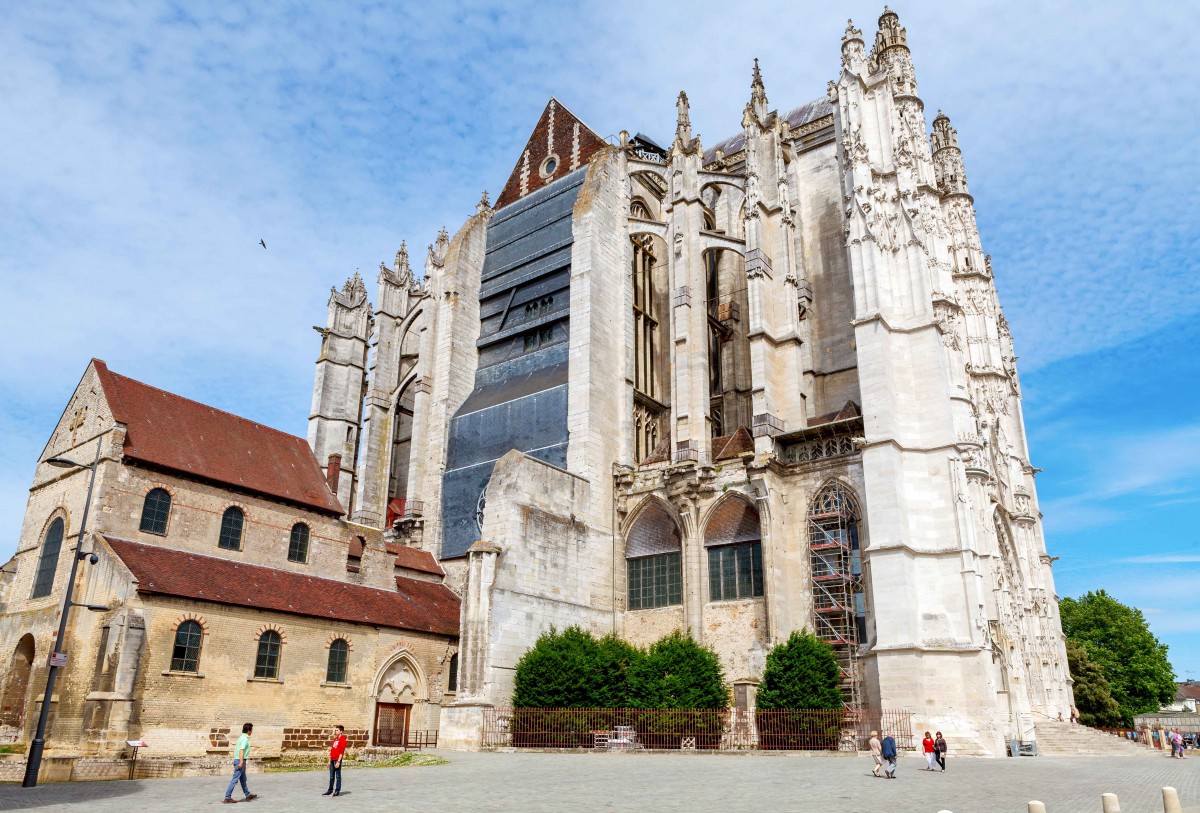
Notre-Dame de la Basse-Œuvre
In 1225, Bishop Milon de Nanteuil and his chapter decided to rebuild the pre-Romanesque cathedral. That church still exists today and is known as “Notre Dame de la Basse-Oeuvre”.
The small Basse-Oeuvre church occupies the site that was initially put aside for the construction of the cathedral’s nave.
Even if today only a part of its nave remains, the Basse-Oeuvre church is one of the few Carolingian buildings that remain in good condition.
The building of a new and Gothic sanctuary
In 1225, the authorities decided to build the Gothic cathedral. Works started at the eastern part of the transept.
The foundations are indicative of the immense scale of the sanctuary. At certain points, they are more than 10 metres deep.
Then, the crown of the chapels and the interiors were built. Followed by the upper reaches of the central nave. The great work was finished on October 3, 1272. Services began immediately inside the building.
However, in 1284, a part of the choir collapsed due to weakness in the structure. The building was strengthened progressively up until 1347 by adding supplementary pillars in the choir.
The Hundred Years War halted the construction of the Saint-Pierre cathedral. However, the church did not suffer too much from the conflict. The Siege of Beauvais by Charles the Bold in 1472 caused minor damage to the edifice.

From 1500 (150 years after the construction of the choir), works on the transept started at the instigation of count-bishop Louis de Villiers de L’Isle-Adam and under the direction of the architect Martin Chambiges. The architect built the transept in the then-fashionable flamboyant style.
But Chambiges died 20 years before the completion of his work. This explains why Michel de Lalict (Chambiges’ presumed successor) built the roofs of the turrets in the Renaissance style by.
That time when Beauvais cathedral became the world’s tallest structure!
When builders completed the transept in 1548, the religious authorities preferred to construct a spire rather than spend money on constructing a nave. This excessively big spire, at its completion, was the highest in all Christendom:
“We will construct a spire so high, that once finished, those who see it will think that we were crazy.”
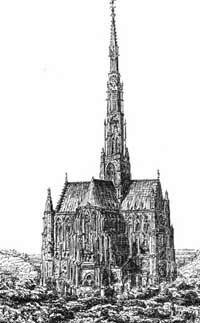
The spire was completed in 1569 after 6 years of work. At 153 metres in height, it gave the cathedral the title of the tallest building in the world. It even surpassed the Basilica of Saint-Peter of Rome.
The cathedral, even though unfinished, was thus at the height of its splendour.
Then the cathedra’s tragedy took place on April 30, 1573. Following a mass, the spire and the three levels of the bell tower collapsed. Only 2 people suffered from minor injuries as the sanctuary had been evacuated in time.
The funding needed to reconstruct the transept’ vaults did not allow for the nave of the cathedral to be built.
Despite this, attempts to construct the nave did indeed go ahead. In 1600, construction on the nave began but only the first arch was actually built.
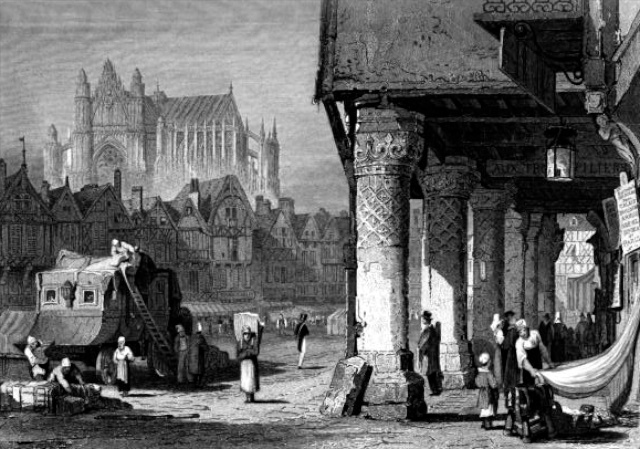
An incomplete cathedral…
Thus, Beauvais Cathedral stays incomplete to this day. It can be set apart from other cathedrals by its significant lack of a nave.
The cathedral’s misfortune continued up till the Revolution. In October 1793, the sans-culottes decapitated the statues of the doorways. They pillaged the interior and desecrated the church to make it a temple dedicated to Reason.
In 1840, the cathedral was listed on the first list of French historical monuments.
During the Second World War, Beauvais Cathedral was damaged by bombing. But did not collapse. 75% of the windows that had not been put in a safe place were broken. The grand organ was completely unusable.
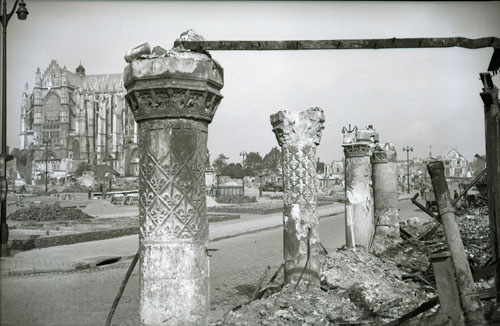
A very fragile monument
Its grand height and the fact that it is not supported by a nave at its west side make the structure of Beauvais Cathedral very fragile.
In the 1990s, the choir started to become very unstable. In some places, the pillars had moved more than 30cm. Due to the risk of collapse, the authorities urgently installed immense trusses in 1993.
Moreover, since 2000, scaffolding has been continually put up around the cathedral to overcome these problems. In 2010, another series of work including the restoration of the roof started.
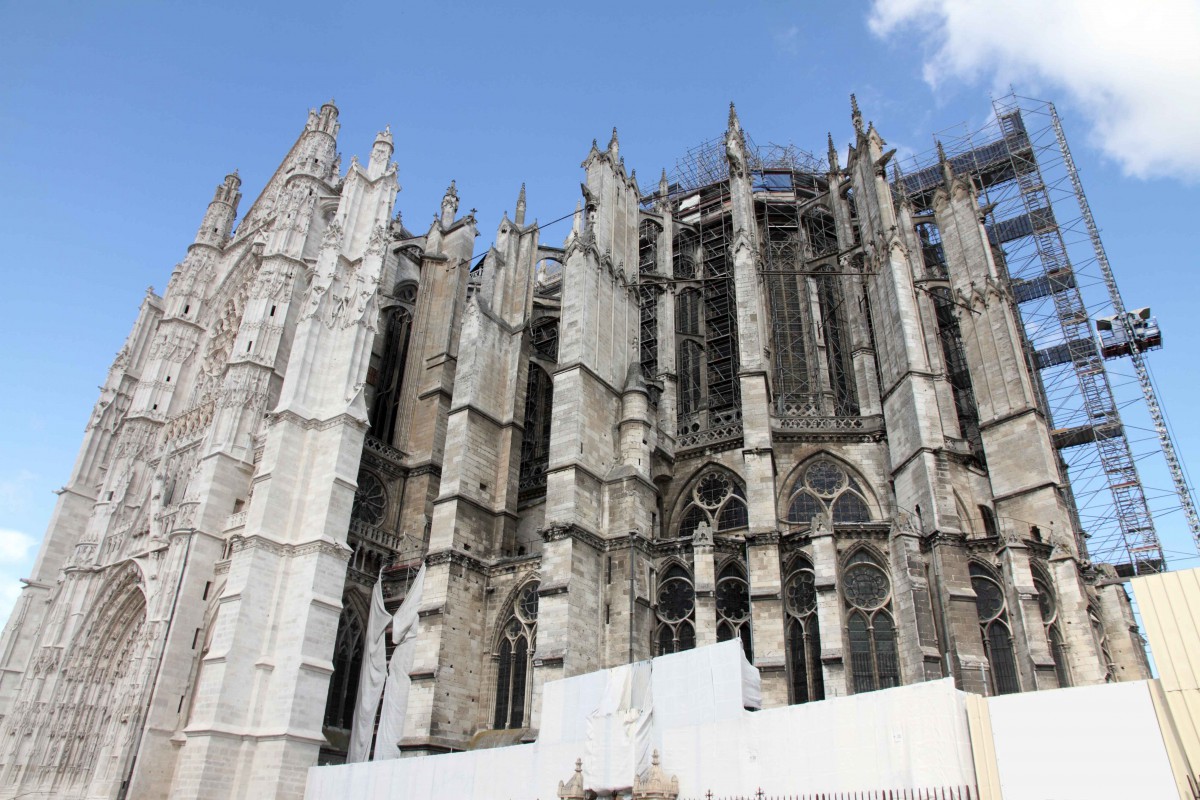
Thanks to extensive studies we know the causes of the cathedral’s instability. It may lead to removing the huge temporary trusses.
According to several experts, Beauvais Cathedral has never been this stable. In 2000 the Superior Commission for the sites of the Ministry of Culture worked on a feasibility study about the reconstruction of the spire.
My book recommendation!
Its name? Simply:
Gothic: Architecture, Sculpture, Painting by Rolf Toman, Publisher: Ullmann
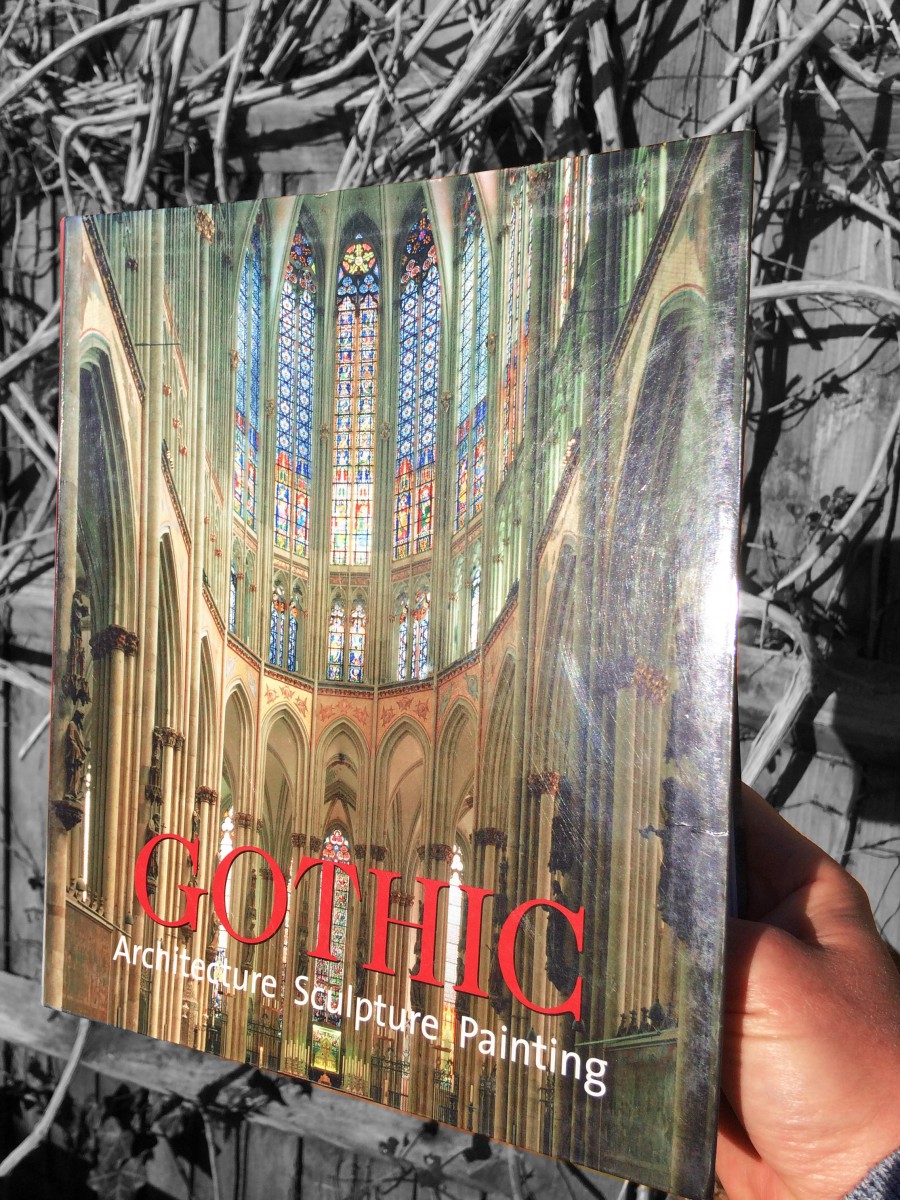
This book has been for me a great resource that helped me better understand the Gothic movement in art from the 12th century to the Renaissance. An architectural style that first originated from France and spread all over Europe.
Over 500 pages it focuses on the development of Gothic architecture with many illustrations and photographs, but not only. I’ve also found interesting the in-depth discussion of the most diverse art forms, including painting, sculpture, metalwork and even book illumination! It also includes specific coverage of the Cathars’ Heresy and the Papal Palace in Avignon. And, of course, it mentions the cathedral of Saint-Pierre de Beauvais!
This is definitely the book I recommend if – like me – you love everything about Gothic such as churches, gargoyles, stained glass, flying buttresses and so much more.
The exterior of Beauvais Cathedral
The Dimensions of Beauvais Cathedral
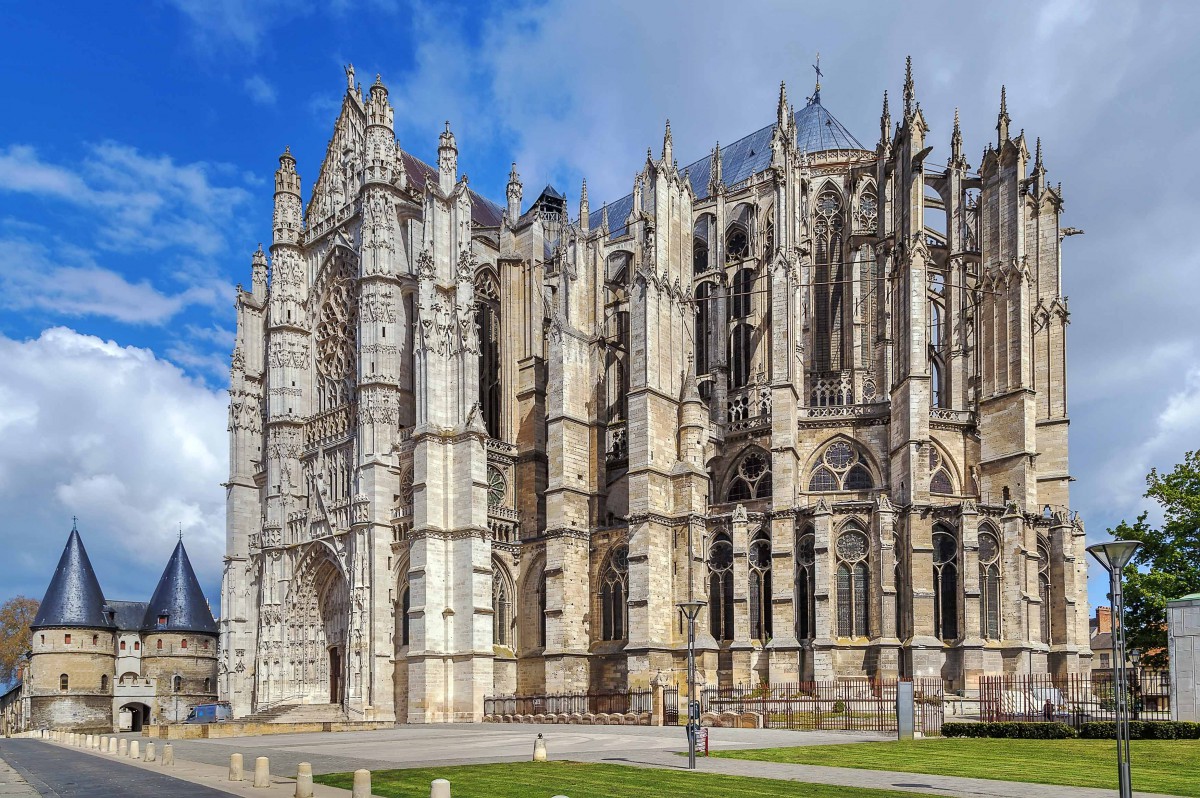
Though it remains unfinished, the gigantic scale of the Cathedral of St. Peter of Beauvais is impressive.
If funding had been sufficient to finish the nave (and planned towers) it would, without a doubt, rank as the highest amongst European gothic cathedrals.
Gigantic dimensions
- The cathedral measures 72.5 metres at its full length and the transept is 58.6 metres.
- The choir has a length of 47 metres. That is much smaller than the choir of Amiens cathedral (64m).
- The cathedral reaches the impressive height of 67.2 metres, which is almost the same height as the towers of Notre-Dame de Paris (69 metres)!
- Of course, Beauvais Cathedral’s reputation is largely due to the vertiginous height of the choir roof. The vault reaches 48.5 metres. This is a world record, far ahead of other French cathedrals, such as Amiens (42.3m), Metz (41.41m), Reims (38m) and Bourges (37.5m).
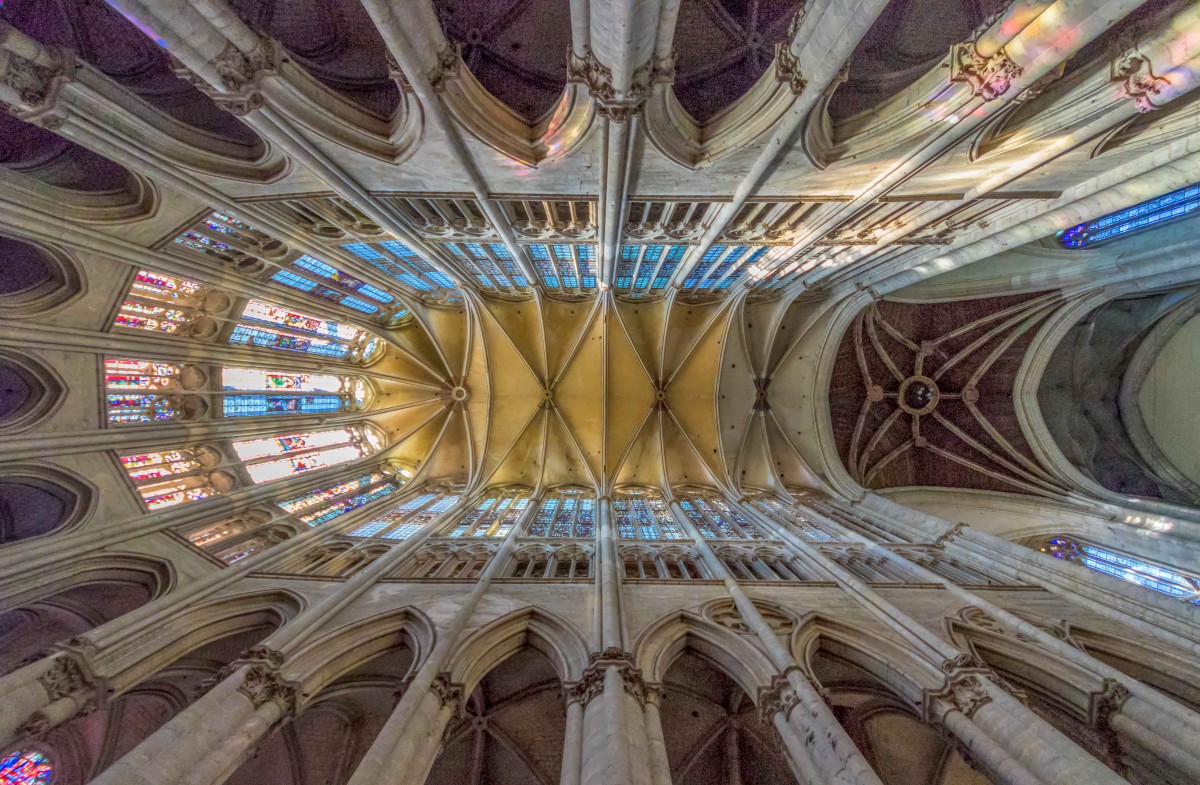
The Northern and Southern Façades of the Transept

The southern façade is magnificently rendered in the gothic style. Notice the Renaissance style in parts of the façade.

The north-facing doors of the cathedral display sculptures of the salamander (emblem of King Francis I) with the crown of France shown above.
The southern great door is decorated with the monogram of Francis I, with an F sitting above the royal crown.
The northern façade is very similar to its southern counterpart. It is less ornate which is probably due to its lack of sun exposure. Nevertheless, it features a remarkable tree of Jesse.
![North Transept of Beauvais Cathedral © Txllxt TxllxT - licence [CC BY-SA 4.0] from Wikimedia Commons](https://frenchmoments.eu/wp-content/uploads/2012/12/North-Transept-of-Beauvais-Cathedral-©-Txllxt-TxllxT-licence-CC-BY-SA-4.0-from-Wikimedia-Commons.jpg)
The Chevet
![The chevet of Beauvais Cathedral by Pepijntje [Public Domain]](https://frenchmoments.eu/wp-content/uploads/2012/12/Beauvais-Cathedral-Chevet-by-Pepijntje-Public-Domain.jpg)
The interior of Beauvais Cathedral
There is something intriguing about the cathedral of Beauvais. As mentioned above in the historic overview, the church has never been completed.
It is easy to see when studying the floor map:
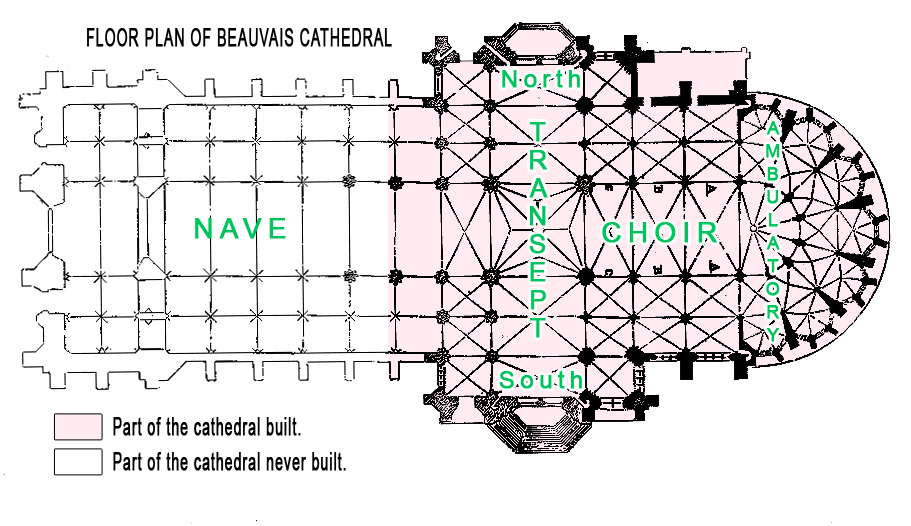
It makes you realise how great the cathedral would have been if the whole nave had been built.
Yet the dimensions of the church are impressive today.
Now let’s step inside. We can’t help but feel overwhelmed by the vertical outburst of the church.
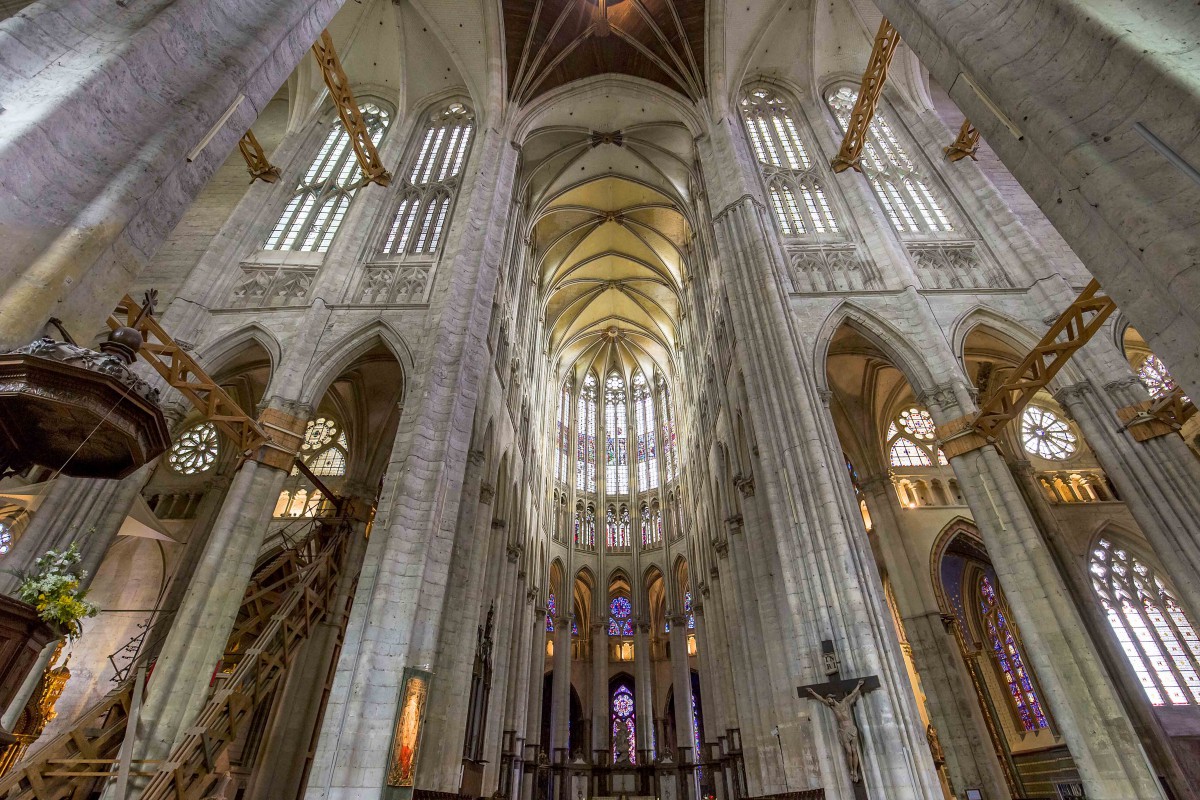
Above the clerestory, almost 17 metres of glasswork allows light to stream inside.
The ribbed arches exert minimal pressure on the piers, which facilitates their impressive elevation.
Stained-glass windows
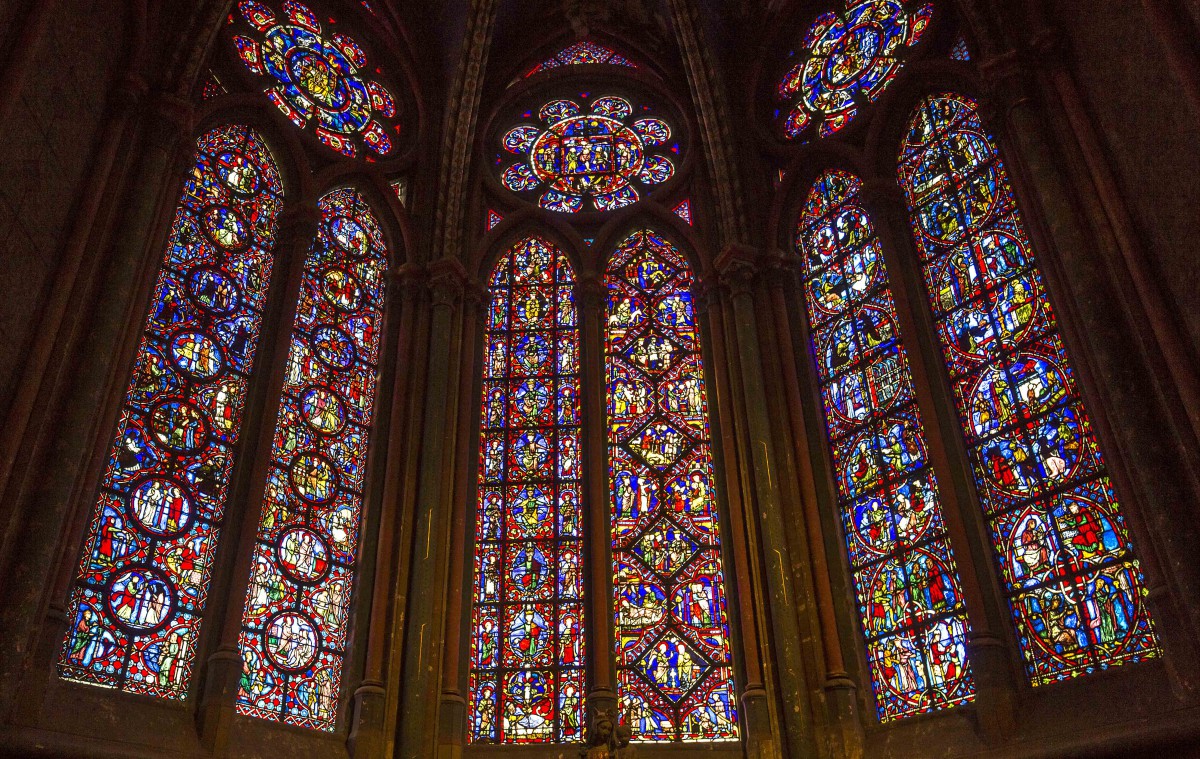
Exceptional stained glass windows from the 13th, 14th and 16th centuries illuminate the interior of the cathedral.
Rose windows situated on the two braces of the transept were added in the 16th century thanks to the donation of the Leprince family of Beauvais.
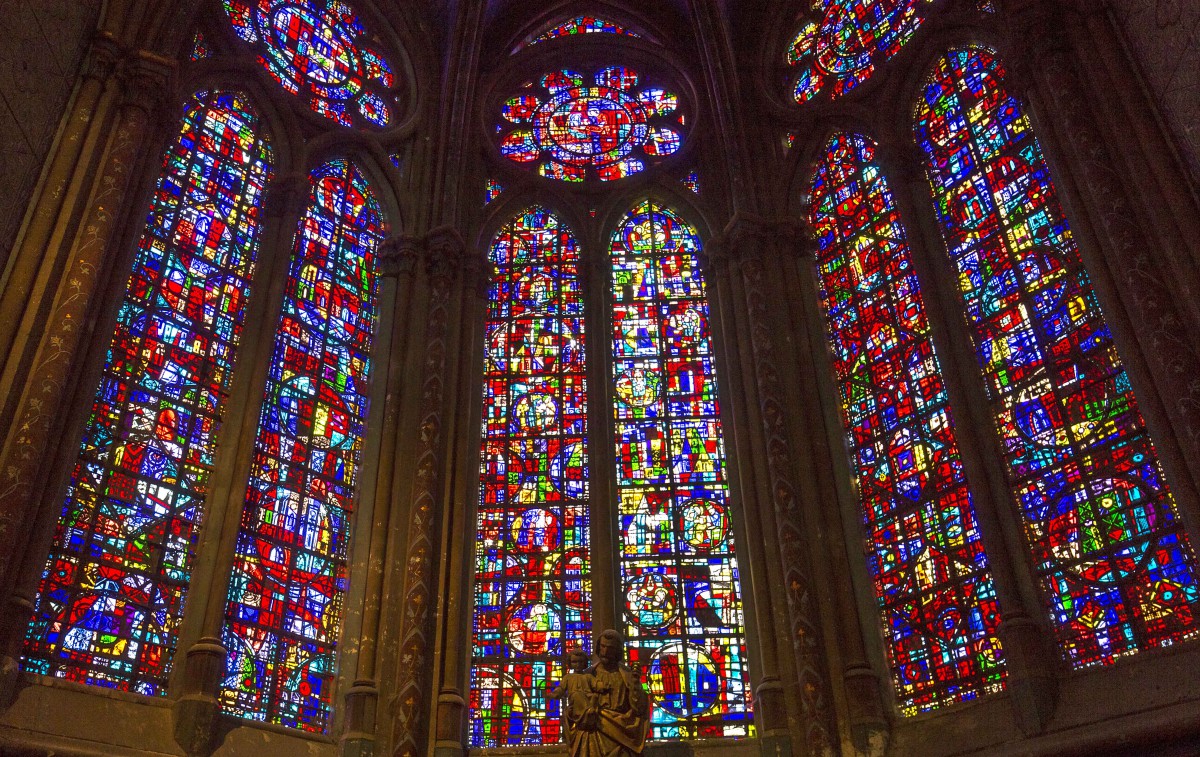
Impressive in size, these are 11m in diameter (in contrast to the windows of Notre-Dame de Paris, which measure 13.1m).
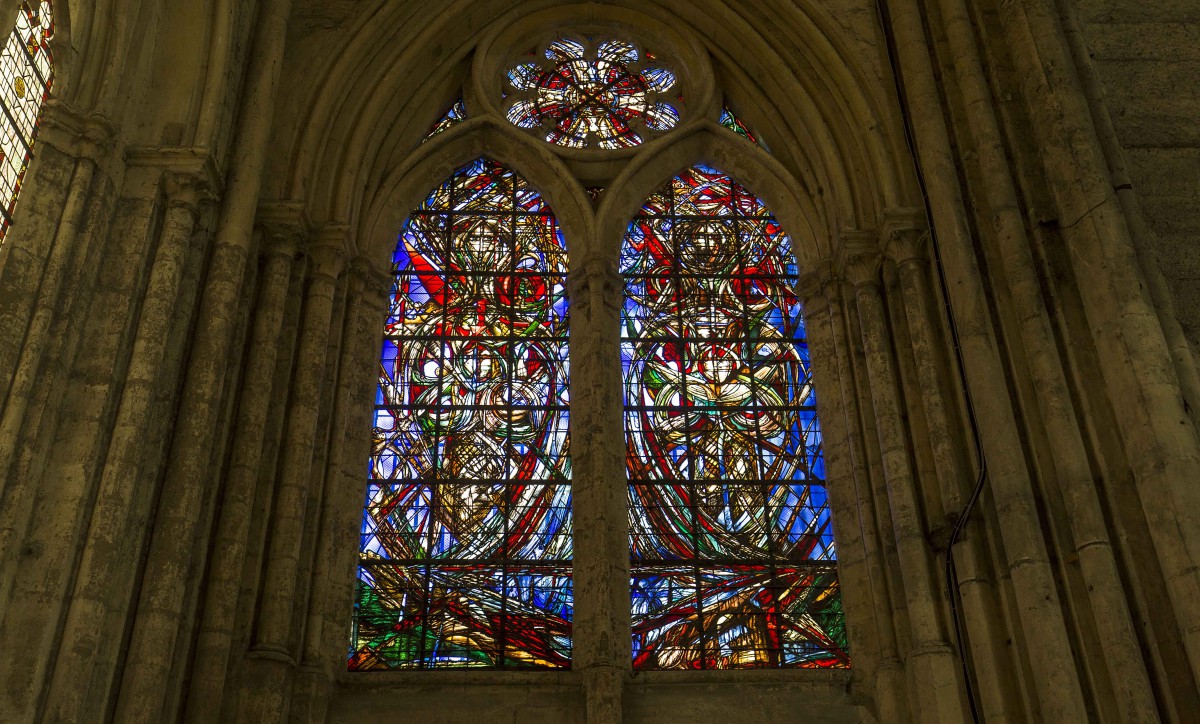
The Ambulatory
The ambulatory has three storeys, which is unusual for French Gothic cathedrals.

Above the arcades on the 1st level, the clerestory stretches for 70m. It now lacks the picture windows of the outside wall, which were most probably bricked up in the 14th century to consolidate the wall. The broken windows of the clerestory of the third level that sit between two arches support a rose window with nine petals.
The ambulatory of Beauvais Cathedral is notable for its 20 m high walls. But also for the 7 rayonnant chapels, each 6.6m deep and 12.5m high. Although they appear crowded, one must still note the graceful elegance of the pillars.
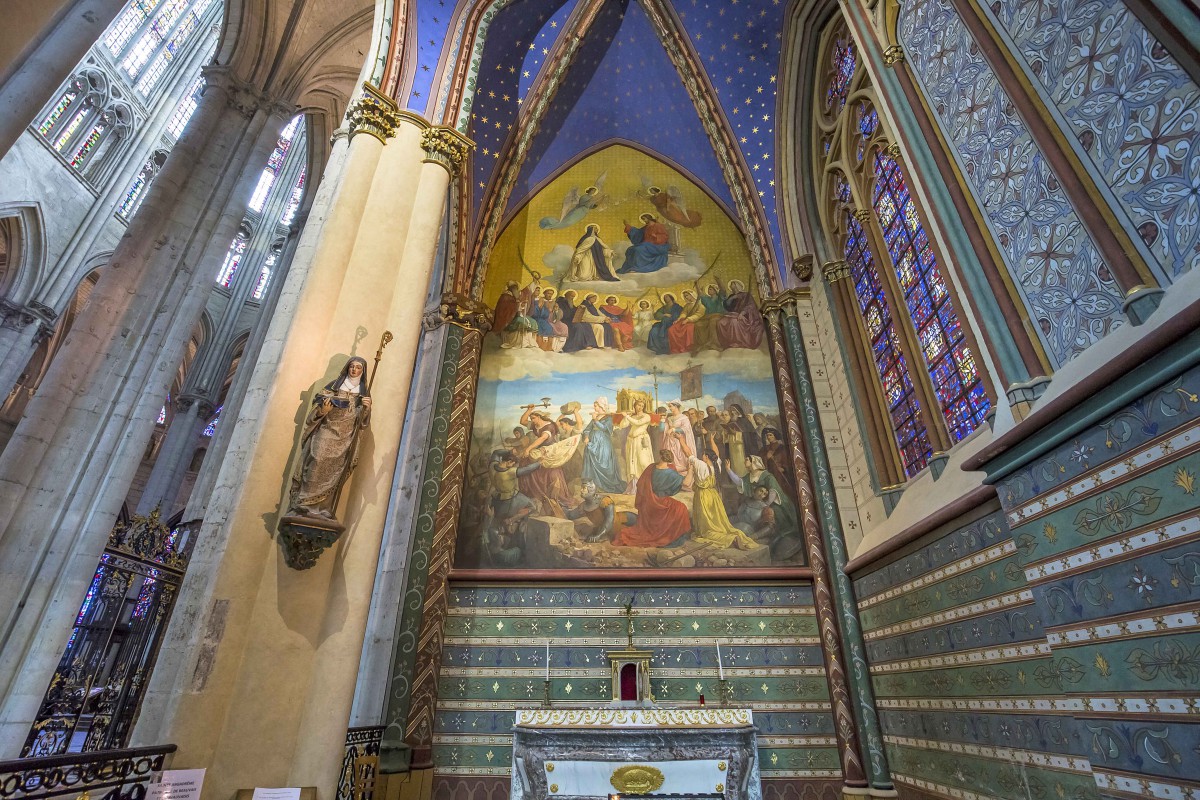
The Choir
The first floor sits high, at the halfway mark of the choir walls at 23m.
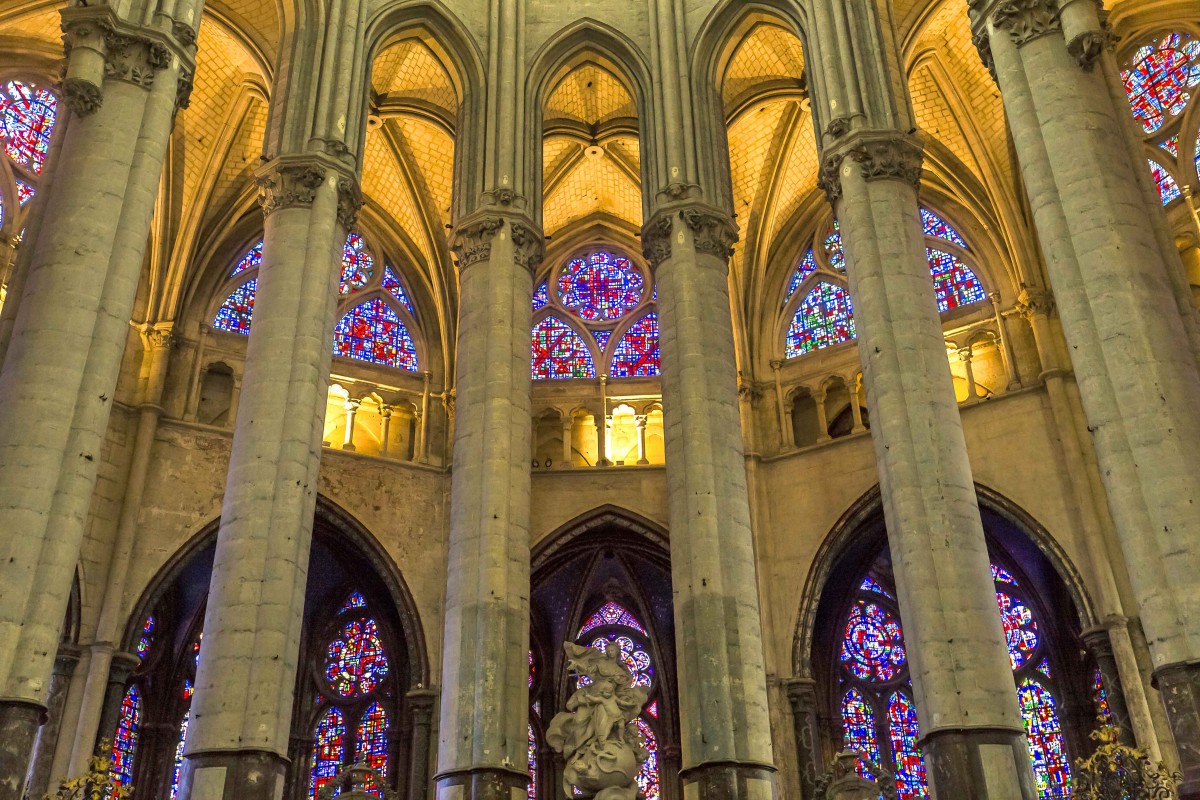
The piers were thickened after the collapse of the choir in the 13th century.
The Astronomical Clock of Beauvais Cathedral
The jewel of the cathedral’s interior is the astronomical clock. This masterpiece was built between 1865 and 1868 by the clockmaker Auguste Vérité. He based it on a model of the Strasbourg clock. Brought to life by a light display, the clock contains an extraordinary 90,000 components, including 68 clockwork figures! The faces of the clock indicate the time, tides and movements of the stars.
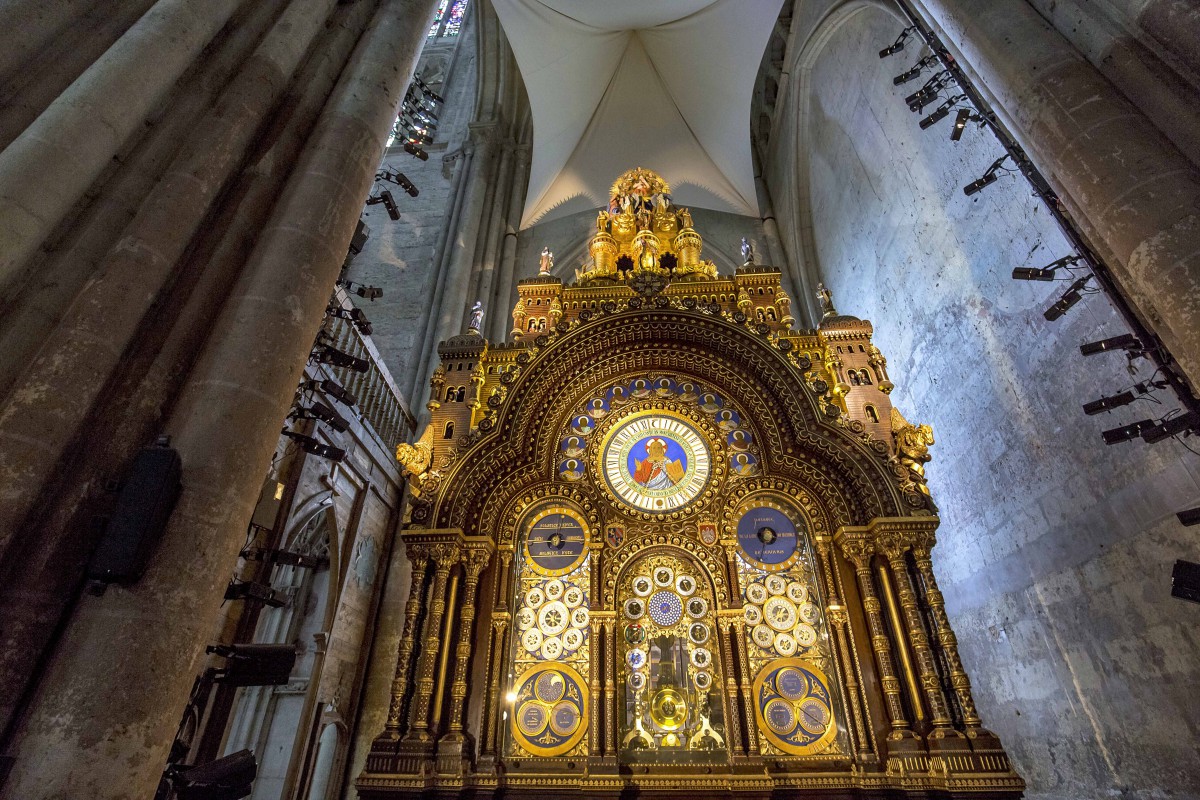
On the 31st July 1988, the clock was stopped and the ESPACES organisation was launched to work on repairing it. A team of five renowned French engineers brought Beauvais’ astronomical clock back into working order.
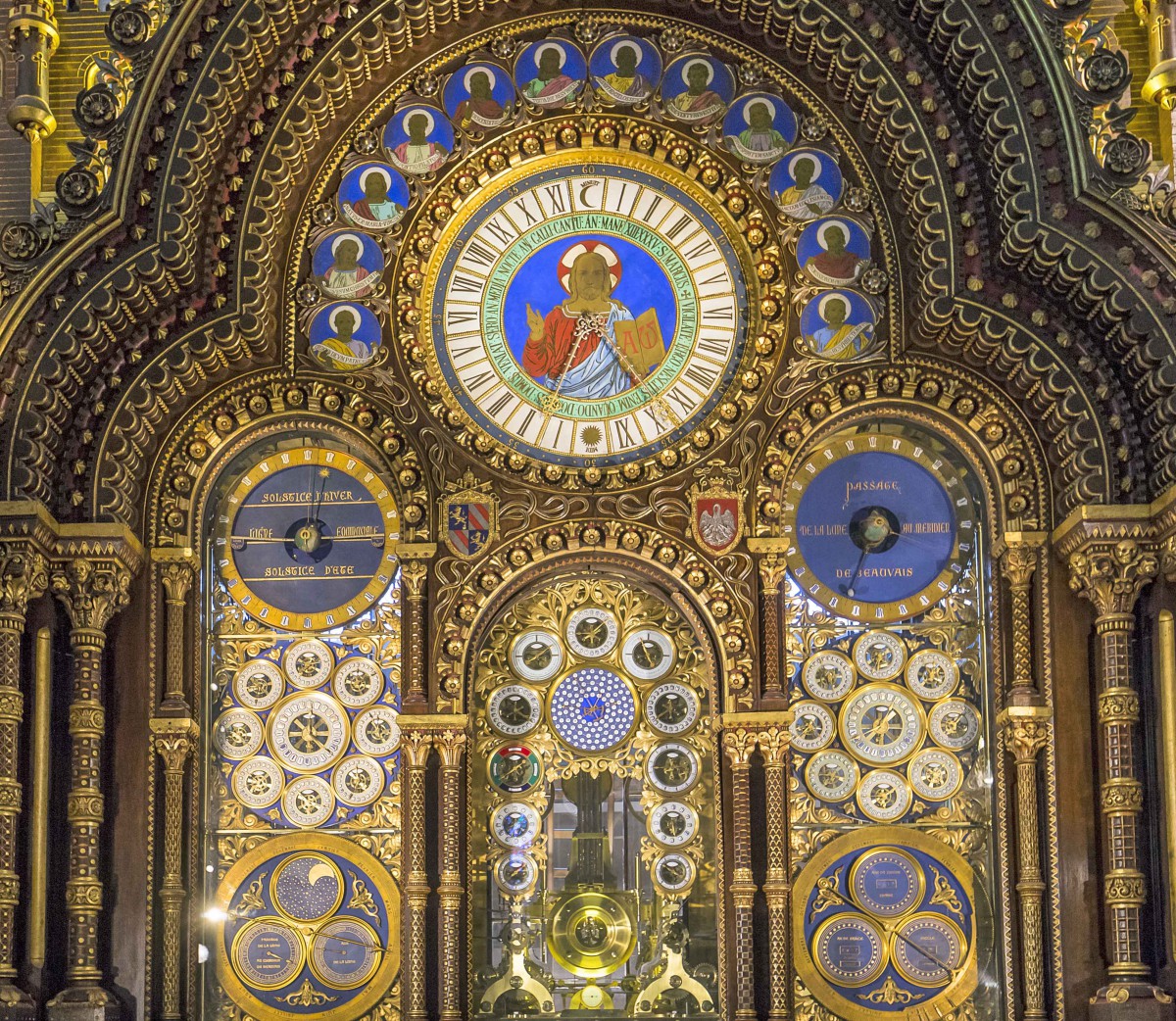
The cathedral is also home to a beautiful medieval chiming clock. Dating back to 1305, this is the oldest in the world still working.
![The medieval clock of Beauvais Cathedral © Tango7174 - licence [CC BY-SA 4.0] from Wikimedia Commons](https://frenchmoments.eu/wp-content/uploads/2012/12/Beauvais-Cathedral-Medieval-Clock-©-Tango7174-licence-CC-BY-SA-4.0-from-Wikimedia-Commons.jpg)
The Tapestries of Beauvais Cathedral
The remarkable tapestries that used to decorate the choir date from the 15th and 17th centuries. Unfortunately, the cathedral has been unable to preserve all of its tapestries. Following a robbery in 1974, some of the most beautiful have been placed in a safe place.
One of the most important examples of medieval tapestry is housed at Beauvais. Known as “the Life of Saint Peter and of Saint Paul”, this 15th-century tapestry originally had 11 panels. Today only 6 of these remain, the others having been lost or separated, taken elsewhere in France or to the United States.
Another 16th-century tapestry that hangs in Beauvais cathedral is titled “Histoire Fabuleuse des Gaules” (The Amazing Story of the Gauls). It depicts the towns of the medieval era in great detail, including Beauvais.
The Treasure of Beauvais Cathedral
The cathedral Saint Peter of Beauvais also houses some of the greatest treasures belonging to a cathedral in France, with a collection of over a thousand artefacts. Unlike other French cathedrals, the treasure of Beauvais cathedral did not fall victim to sackings during the various revolutions. That said, it is not possible for visitors to view the treasure.
The cloister of the cathedral
![Cloister of Beauvais Cathedral © Chatsam - licence [CC BY-SA 3.0] from Wikimedia Commons](https://frenchmoments.eu/wp-content/uploads/2012/12/Cloister-of-Beauvais-Cathedral-01-LR-©-Chatsam-licence-CC-BY-SA-3.0-from-Wikimedia-Commons.jpg)
![Cloister of Beauvais Cathedral © Chatsam - licence [CC BY-SA 3.0] from Wikimedia Commons](https://frenchmoments.eu/wp-content/uploads/2012/12/Cloister-of-Beauvais-Cathedral-02-LR-©-Chatsam-licence-CC-BY-SA-3.0-from-Wikimedia-Commons.jpg)
The light show
A free light show ‘La Cathédrale Infinie‘ is projected onto the façade of the cathedral in Summer. The 2 sessions of 30 minutes long take place at nightfall. In 2018, the light show was projected on Fridays and Saturdays from 6 July to 15 September.
![Beauvais Cathedral Light Show © Chatsam - licence [CC BY-SA 3.0] from Wikimedia Commons](https://frenchmoments.eu/wp-content/uploads/2012/12/Beauvais-Cathedral-Light-Show-©-Chatsam-licence-CC-BY-SA-3.0-from-Wikimedia-Commons.jpg)
What to see in Beauvais
Beauvais is located in the historic province of Ile de France (despite being today included in the Hauts-de-France administrative region).
Since you are visiting the cathedral, take the time to stroll in the old town to visit Beauvais.
You won’t find too many monuments.
In early June 1940, the city was heavily bombed by the German Luftwaffe. A great fire led to the destruction of two-thirds of Beauvais. Only a few medieval houses (and the cathedral) were spared.
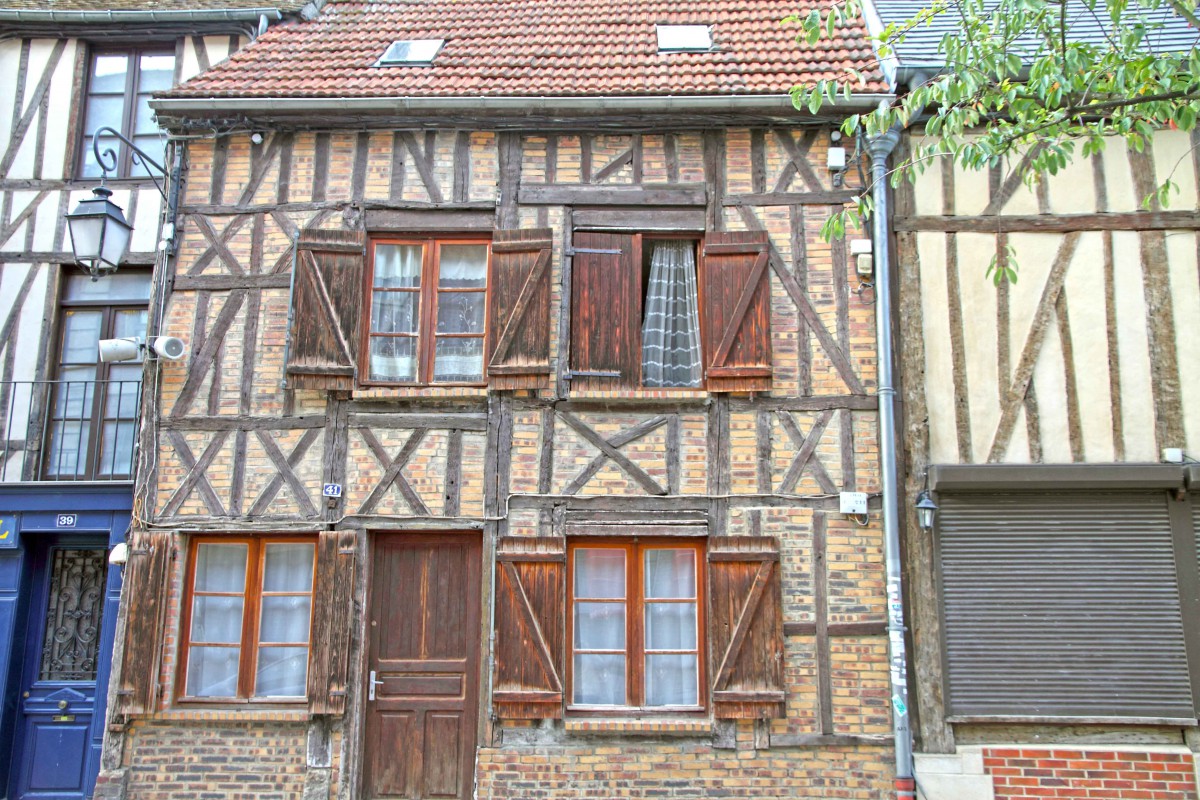
The old town centre of Beauvais was rebuilt after the war. But many old houses were never risen to their ashes except for a few half-timbered buildings.

Nevertheless, make sure to see the following sites:
The bishop’s palace
The 12th-century edifice was partly built on top of the Gallo-Roman wall.
The gateway is flanked by two massive towers.

Inside the domain, the main edifice was built in Renaissance style in the early 16th century.
![Beauvais Bishop Palace © Pierre Poschadel - licence [CC BY-SA 4.0] from Wikimedia Commons](https://frenchmoments.eu/wp-content/uploads/2012/12/Beauvais-Bishop-Palace-LR-©-Pierre-Poschadel-licence-CC-BY-SA-4.0-from-Wikimedia-Commons.jpg)
St. Etienne church
The current church was built in the early 12th century on the site of an older sanctuary.

The nave and transept are of Romanesque style.
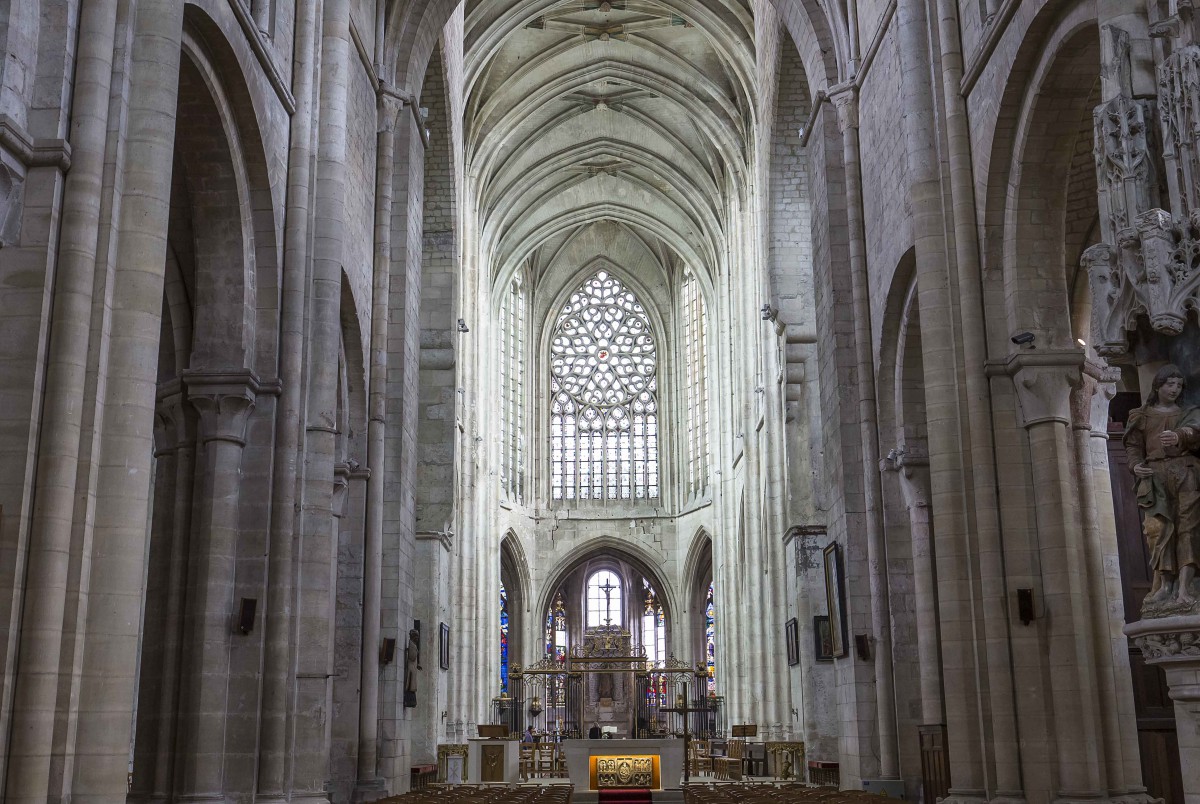
The choir was built in Flamboyant Gothic in the 16th century.
The church is famous for the stunning stained-glass windows of the chancel. They are among the finest from the Renaissance era.
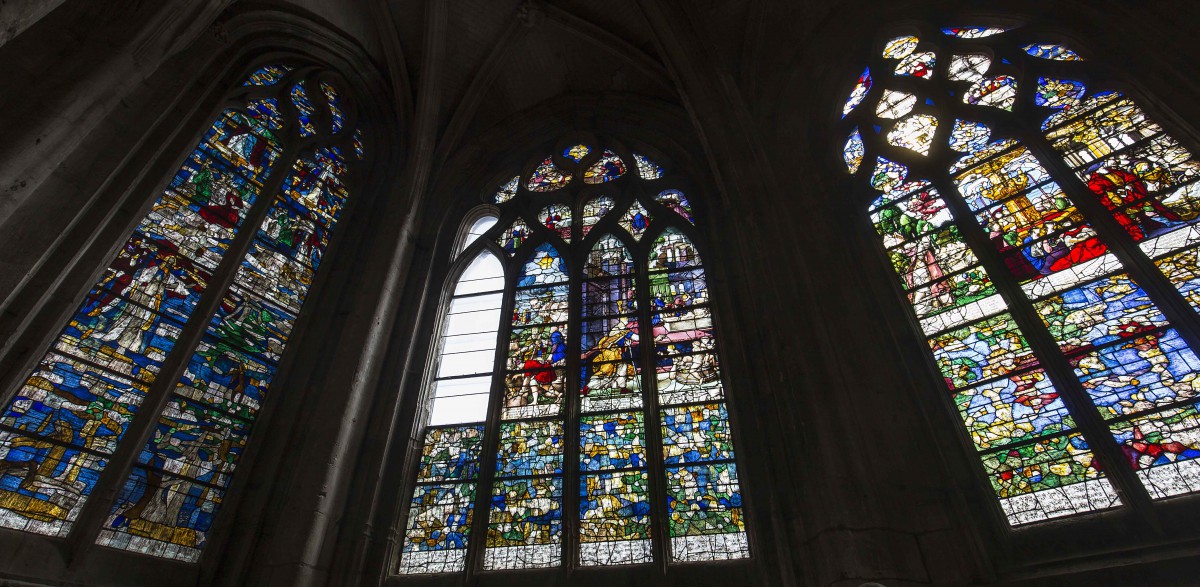
One of them is particularly beautiful: the Tree of Jesse (1522).
![The Jesse Tree stained-glass in the church of Saint-Étienne [public domain]](https://frenchmoments.eu/wp-content/uploads/2012/12/Beauvais-Saint-Étienne-Jesse-Tree-public-domain.jpg)
The Maladrerie Saint-Lazare de Voisinlieu
This medieval complex is the best-preserved hospitaller in Northern Europe with buildings dating back to the 12th and 13th centuries.
![The Maladrerie Saint-Lazare, Beauvais © JmDeBovet - licence [CC BY-SA 3.0] from Wikimedia Commons](https://frenchmoments.eu/wp-content/uploads/2012/12/Beauvais-Maladrerie-Saint-Lazare-LR-©-JmDeBovet-licence-CC-BY-SA-3.0-from-Wikimedia-Commons.jpg)
Where to stay in Beauvais
Click here to get a list of accommodation (hotels, guest houses, campings…) that are found in Beauvais.
The map below will help you choose your accommodation according to your preferred location:
How to get there
Beauvais (pop. 56,000) is the head city of the Oise département (60).
The city is located in the Hauts-de-France administrative region, at 67 km from Paris, 53 km from Amiens and 72 km from Rouen.

- The A16 motorway connecting Beauvais to Paris takes one hour. Amiens is 45 minutes and Calais in 2 hours.
- Several trains operate daily to and from Paris (about 1 hr 15 from Gare du Nord).
- The Paris-Beauvais airport is located in the suburb of Tillé.
- If you are landing at the airport and want to discover Beauvais and its cathedral, take the number 6 city bus (Corolis Shuttle). It will take you directly to the city centre in approximately 20 minutes.
Practical Information about Beauvais
Opening times
- 1st November to 31st March: open from 10 am to 12.15 pm and from 2 pm to 5.15 pm
- 1st April to 31st October: open from 10 am to 6.15 pm
- Astronomic Clock: 10.30am, 11.30am, 2.30pm, 3.30pm and 4.30pm. Additional times from April to October: 12.30 pm and 1.30 pm.
Useful websites to find out more about Beauvais
- The Tourist Office Board of Beauvais
- The website of the Association Beauvais Cathédrale (ABC) [in French]
- The article on Wikipedia about Beauvais Cathedral
- The website of the MUDO (Oise museum)
- My blog articles on the other great Gothic cathedrals in Northern France:
Pin it for later
Liked what you read? Pin it on Pinterest:


![Beauvais Cathedral by Pepijntje [public domain]](https://frenchmoments.eu/wp-content/uploads/2012/12/Beauvais-Cathedral-Featured-Image-by-Pepijntje-public-domain.jpg)



That was an interesting read!
By the way, this post was forwarded to me by one of your subscribers in Georgia/U.S.A.
On our way to Normandy for our summer holidays (we are in Oberursel, Germany), I hope to stop by this cathedral. Thanks for your sharing this information!
You’re welcome. If you have time, the cathedral of Amiens (North of Beauvais) is worth a visit too! 🙂